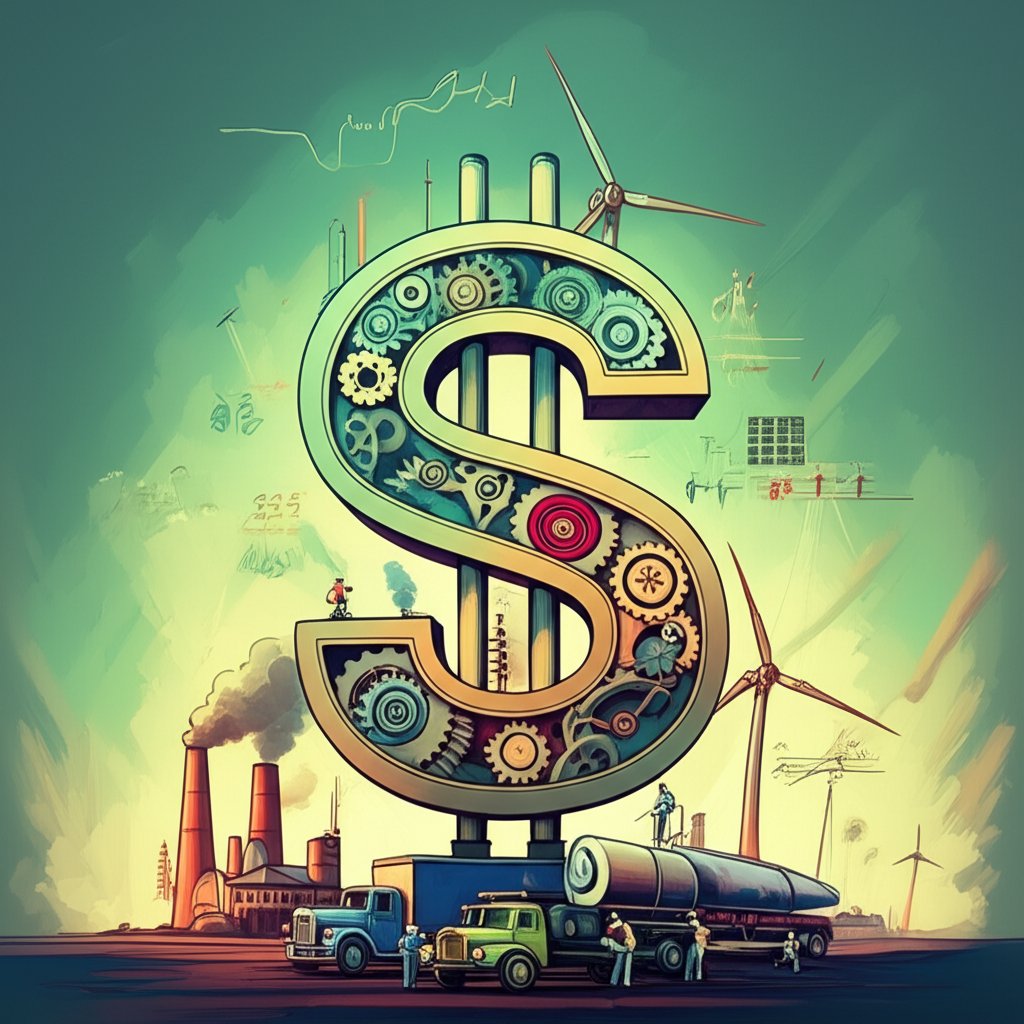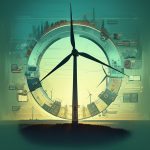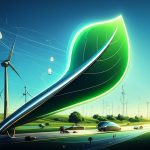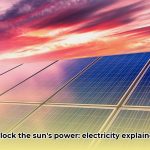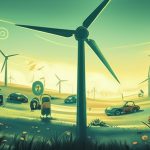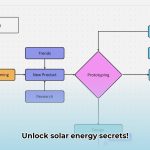The sticker shock of a new wind turbine can be significant. But understanding exactly what influences the final wind turbine cost, from the type of turbine you choose to where you put it, is crucial for making an informed decision about whether it’s the right energy solution for you.
At a glance:
- Wind turbine costs vary widely, from a few thousand dollars for small units to millions for utility-scale projects.
- Location matters: offshore turbines are significantly more expensive than onshore.
- Size and capacity are key drivers: larger turbines cost more upfront but generate more power.
- Installation, maintenance, and grid connection are major cost factors.
- Government incentives can substantially reduce the overall cost.
- Payback periods range from 6-10 years for commercial wind farms to 10-20+ years for residential setups.
What Does a Wind Turbine Actually Cost? A Breakdown.
The price range is considerable. You might be looking at $15,000 for a small residential unit, or upwards of $4 million for a utility-scale turbine. Generally, commercial installations average between $750,000 and $2 million per turbine, but this is just a starting point. To drill down further:
- Small residential wind turbines (10 kW): Expect to pay $50,000 to $80,000, including professional installation.
- Community-scale wind turbines (250 kW): These can cost $500,000 to $750,000 installed, ideal for powering schools, farms, or small businesses.
- Commercial wind turbines (2-4 MW): The average cost ranges from $2.5 million to $4 million, or about $1 million to $1.25 million per megawatt.
- Offshore wind turbines: These specialized turbines are much pricier, ranging from $2.5 million to $4 million per megawatt for the equipment alone. Full project costs can easily reach $5 million to over $10 million per megawatt. The largest offshore turbines can cost tens of millions of dollars, with the most powerful 12 MW turbines reaching up to $400 million for manufacturing and installation.
Keep in mind that these are ballpark figures. Several factors can significantly influence the final price.
Decoding the Major Factors Impacting Wind Turbine Cost
The final price tag of a wind turbine isn’t just about the turbine itself. Here’s a look at the key components that contribute to the overall wind turbine cost:
- Turbine Type and Size: A small rooftop turbine will obviously cost less than a massive offshore turbine capable of powering thousands of homes. Typically, the actual turbine costs 69% of the whole project.
- Location (Onshore vs. Offshore): Onshore wind farms involve conventional designs that minimize transportation and foundation expenses, while offshore projects require specialized maritime equipment, subsea anchoring, and underwater cable networks, driving costs up significantly.
- Installation Costs: This includes site preparation, foundation construction, turbine assembly, and grid connection. These costs can add millions to the overall project.
- Grid Connection Costs: If the wind farm is far from existing transmission infrastructure, building new overhead transmission lines, access roads, transformer substations, and other electrical system upgrades can be a major expense. Interconnection costs can exceed $100 million for remote wind farms.
- Maintenance Costs: Keeping turbines running smoothly requires regular inspections, preventative maintenance, and occasional repairs. Routine wind turbine maintenance costs range from $42,000-$48,000 per MW per year.
- Permitting and Regulatory Costs: Navigating the permitting process can be complex and expensive, involving environmental impact studies, zoning approvals, and negotiations with local communities.
Onshore vs. Offshore Wind Turbine Costs: A Deep Dive
The location of your wind turbine project has a dramatic impact on costs. Here’s a closer look:
Onshore Wind:
- Lower Upfront Costs: Land-based projects avoid the complexities of maritime construction, reducing expenses.
- Easier Installation: Conventional wind turbine designs simplify logistics and installation.
- Maintenance Access: Onshore turbines are typically easier and cheaper to access for maintenance and repairs.
Offshore Wind: - Higher Turbine Costs: Offshore turbines need advanced corrosion protection and specialized maritime designs.
- Challenging Installation: Subsea anchoring and underwater cable networks increase costs.
- Increased Maintenance Costs: Harsh sea conditions and accessibility challenges escalate ongoing maintenance expenses.
- Larger Turbine Size: Offshore wind farms choose larger wind turbines in part because of the high cost of installing them and transporting the electricity, as well as the increased efficiency they gain with consistent, faster wind speeds. Fewer, bigger turbines = easier power transport, fewer long-distance cables and a simpler overall system.
As a result, offshore wind projects can cost 3-4 times more per megawatt than onshore projects. Current projections for the cost of an offshore turbines cost is about $1.5M per Megawatt of power produced – meaning a 10MW wind turbine would come to about $15,000,000.
Size Matters: How Turbine Capacity Affects Cost
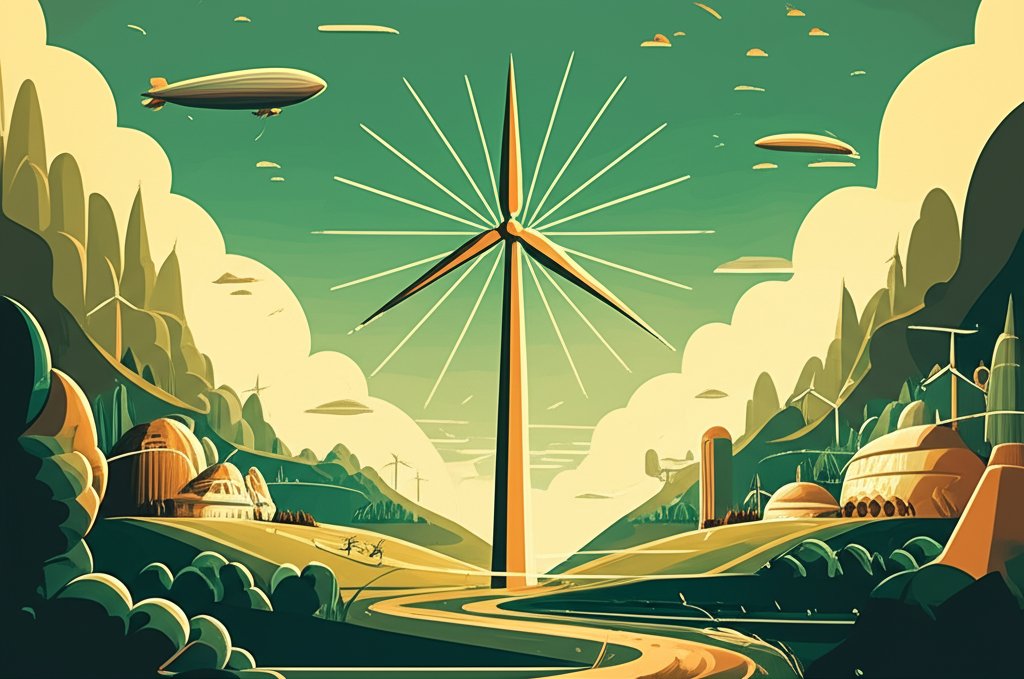
The capacity of a wind turbine, measured in megawatts (MW), is a primary driver of cost. A utility-scale wind turbine costs between $1.3 million to $2.2 million per MW of installed nameplate capacity.
- Economies of Scale: Larger turbines capture more energy, reducing the cost per megawatt of electricity generated. Larger rotors spanning longer blades increase energy capture, driving down cost per MW.
- Higher Upfront Investment: While cheaper per megawatt, larger turbines require a significant initial investment.
- Commercial-Scale Example: Most commercial-scale turbines installed nowadays are 2 MW in capacity and cost between $3 and $4 million to install.
Keep in mind that a wind turbine has a maximum rated capacity (such as 4 megawatts), but it will only produce electricity at a “capacity factor” or “load factor” that is a percentage of this maximum. Because wind turbines can’t maintain peak production at all times (not even close) due to changing wind conditions, downtime for service, etc. – it’s important to consider capacity factor when calculating the expected power a turbine can produce over a year or more.
Installation Costs: Beyond the Turbine Itself
Don’t forget the often-overlooked installation costs, which can significantly impact the overall wind turbine cost. This includes:
- Site Preparation: Clearing land, grading, and building access roads. Assess the site and research the best position, mainly determined by the type of turbine you want to install and any obstructions to wind flow.
- Foundation Construction: Building a stable foundation to support the turbine. Stand-alone turbines may require foundations and trenches for wires to the control box and inverter.
- Turbine Assembly: Assembling the turbine components on-site.
- Electrical Connections: Connecting the turbine to the grid. The US Distribution Network Operator needs to be notified before installation to verify the electrical connection to the grid is safe
These costs vary depending on the site’s location, terrain, and soil conditions.
Operation and Maintenance (O&M): The Ongoing Costs
Wind turbine costs don’t stop after installation. You also need to factor in ongoing operation and maintenance (O&M) expenses. Routine wind turbine maintenance costs range from $42,000-$48,000 per MW per year. [placeholder_link slug=”wind-turbine-diagram” text=”Explore wind turbine diagrams”]
O&M typically includes the following:
- Insurance
- Land costs, rent, and taxes
- Service, repair, and spare parts
- Administrative tasks
- Power (it does take some electricity to run)
- Miscellaneous
Harsh conditions, especially offshore, can drive up maintenance costs. The single most expensive wind turbine component is the nacelle, which houses the gearbox, generator and control systems. Nacelles account for up to 30% of total turbine costs and cost over $1 million each.
Government Incentives: Reducing the Wind Turbine Cost Burden
Fortunately, government incentives can significantly reduce the financial burden of wind turbine projects. A majority wind farms worldwide are heavily subsidized by government investment; however, wind farms in the US and elsewhere in North America operate in a more businesslike manner. Several incentives are available, including:
- Production Tax Credit (PTC): Provides a tax credit for each kilowatt-hour of electricity generated over the first 10 years of operation. The federal Production Tax Credit (PTC) provides an inflation-adjusted tax credit of around $0.015 – $0.024 per kilowatt-hour generated by new utility-scale wind projects continuously over their first 10 years of operation. This discount on taxes amounts to 10-20% of project costs.
- Investment Tax Credit (ITC): Allows developers to claim a tax credit based on the total capital expenditures for the project. The Investment Tax Credit (ITC) allows new wind project developers to receive a 26% tax credit claimed against the total capital expenditures for turbines and construction.
- Renewable Portfolio Standards (RPS): Require utilities to procure a certain percentage of their electricity from renewable sources like wind. Renewable Portfolio Standards (RPS) that require utilities to procure a set portion of power from wind and other renewables provide a guaranteed future revenue stream for qualified projects.
- Feed-in Tariffs: Guarantee wind farm owners a minimum rate per kilowatt-hour of electricity generated. Feed-in tariffs guarantee wind farm owners an above-market minimum rate per kilowatt-hour over a set contract period, enhancing the economic proposition.
These incentives can significantly improve the economics of wind turbine projects.
Payback Period: When Will You See a Return on Investment?
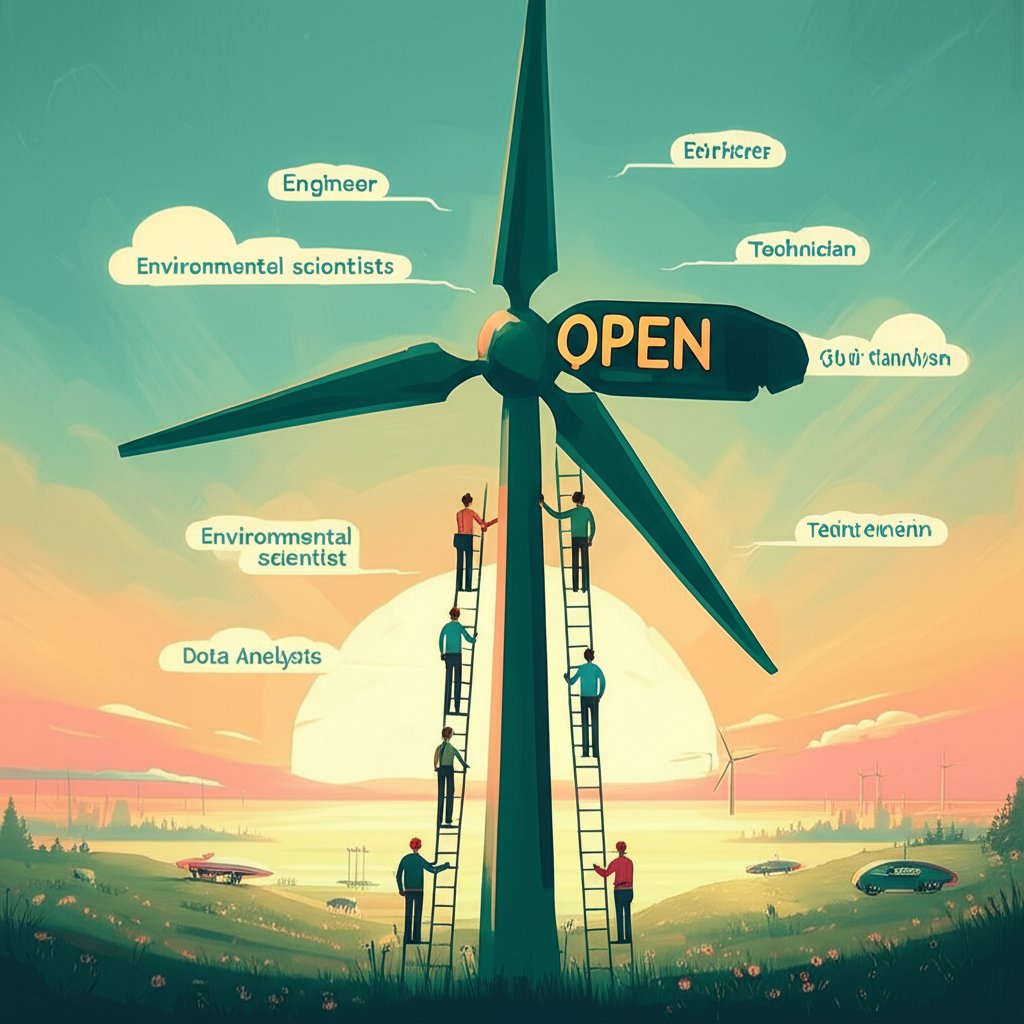
The payback period for a wind turbine project depends on several factors, including the turbine’s size, location, wind resource, and available incentives. The typical sale price of electrical power created by wind turbines is also a factor. This power is sold back to the electrical grid of utility companies, and the price has been falling as turbine technology has improved. This sale of electricity is how wind turbines pay for themselves and create renewable energy.
- Utility-Scale Wind Farms: The initial investment of $3 million to $6 million per megawatt is typically recouped within 6-10 years on average.
- Small Residential Turbines: These can take substantially longer – often 10 to 20+ years – to realize a net positive return on investment.
Economic viability and payback period for small-scale wind heavily depends on the local wind resource availability as well as zoning codes and incentives.
Wind Turbine Cost: Common Questions & Misconceptions
Here are some frequently asked questions about wind turbine costs:
Q: How much does a small home wind turbine cost and how much power will it generate?
A: Small turbines that create roughly 2,000 kWh (kilowatt hours) per year cost between $2,000 and $8,000. Larger units can cost $27,000 or more and produce around 9,000 kWh per year. Though larger turbines yield a little over 40MWh each year! Note, the site must be assessed, and the best position researched, mainly determined by the type of turbine you want to install and any obstructions to wind flow. If you install a roof-mounted system, you must first do a structural analysis to ensure the structure can accept the turbine.
Q: What are the annual operational costs for a commercial wind turbine?
A: The operational costs for these turbines are estimated at $42,000 to $48,000 annually. Routine wind turbine maintenance costs range from $42,000-$48,000 per MW per year. A showed that these costs can be 1-2 Eurocents per kilowatt hour (kWh) produced, on average.
Q: What is the average lifespan of a wind turbine?
A: Wind turbines provide 20-30 years of reliable clean energy.
Q: How much do wind turbine repairs cost?
A: Repairs can be a significant capacity reducer and are part of any maintenance budget.
Q: How tall are most common commercial wind turbines?
A: The towers on most commercial wind turbines are in the range of 200-260 feet tall. The blades, often well over 100 feet long, when counted in total height push the number well into the 300s.
Making the Right Choice: Is a Wind Turbine Worth the Investment?
Deciding whether to invest in a wind turbine requires careful consideration of your energy needs, budget, and local wind resources. Here’s a step-by-step approach:
- Assess Your Energy Needs: Determine your current and future electricity consumption.
- Evaluate the Wind Resource: Research the average wind speeds at your location.
- Calculate the Potential Energy Production: Estimate how much electricity a wind turbine could generate at your site.
- Estimate the Total Wind Turbine Cost: Factor in the turbine price, installation costs, maintenance expenses, and potential incentives.
- Compare the Cost to Other Energy Sources: Evaluate the cost of electricity from the grid or other renewable energy sources.
- Consider Environmental Benefits: Weigh the environmental benefits of wind power against the financial costs.
While carrying higher capital costs, wind turbine projects with proper siting deliver decades of carbon-free electricity. Relative to solar photovoltaics, wind power requires greater upfront infrastructure and construction costs, but provides more reliable year-round power generation where wind resources are abundant. The scaling and location must be optimized. [placeholder_link slug=”wind-turbine-vacancies” text=”Options (all contextually appropriate): Wind Turbine”]
Beyond the Numbers: Future Trends in Wind Turbine Costs
The wind energy industry is constantly evolving. Here are some trends to watch that could impact future wind turbine costs:
- Technological Advancements: Larger rotors, taller towers, and more efficient generators are driving down the cost of wind energy.
- Manufacturing Efficiencies: As wind turbine manufacturers scale production, improved manufacturing and supply chain efficiencies will cut equipment costs over time.
- Floating Offshore Foundations: New materials make deep water wind farms viable while reducing maritime construction costs.
- Policy Support: Continued government support for renewable energy will help to further reduce wind turbine costs.
By staying informed about these trends, you can make a more informed decision about investing in wind energy.
Your Next Steps: Getting Started with Wind Energy
The wind turbine cost picture is complex, but hopefully, this guide has provided you with a solid foundation for understanding the key factors involved. To move forward:
- Contact a qualified wind turbine installer: Get a professional assessment of your site and energy needs.
- Research available incentives: Explore federal, state, and local programs that can reduce the cost of your project.
- Visit operating wind farms: See wind turbines in action and talk to owners about their experiences.
- Start your project planning: Begin gathering initial quotes and compare the figures available to you.
Wind energy offers a promising path to a cleaner, more sustainable future. With careful planning and informed decision-making, you can determine if it’s the right choice for you.
- How Did Charles F. Brush Discover Wind Energy Tech? - November 19, 2025
- Wind Energy Vertical: Weighing the Pros and Cons of Wind Power - November 16, 2025
- How Much Energy Does a Wind Turbine Actually Create? - November 14, 2025
